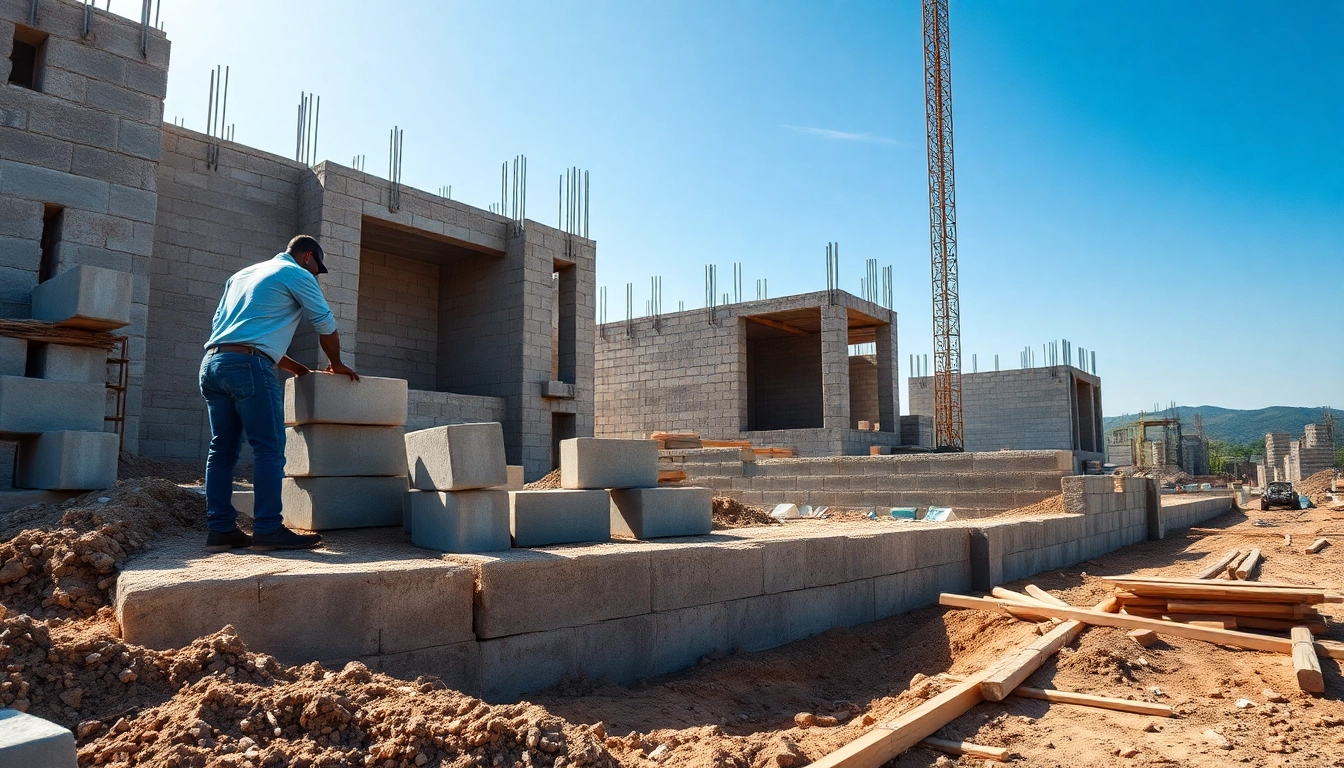
Building Strong Foundations: Understanding Footing and Block Walls for Your Projects
1. Introduction to Footing and Block Walls
In the realm of construction, the structural integrity of buildings is paramount. One of the foundational elements that plays a critical role in ensuring this integrity is the combination of footing and block walls. Understanding these components is essential for anyone involved in construction or renovation projects. Footing and block walls serve as the backbone of any structure, providing the necessary support and stability to withstand various environmental stresses. This article explores what footing and block walls are, their significance, applications, and the best practices for their installation and maintenance.
1.1 What are Footing and Block Walls?
Footings are the lower portions of a foundation, designed to distribute the weight of a structure across a larger area of soil. They transfer the load from the walls and columns to the ground, thereby preventing any shifts or settling that can lead to structural damage. Block walls, typically constructed from concrete masonry units (CMUs), are commonly used in conjunction with footings. These walls provide vertical support and enclose spaces within a building, making them a versatile option in both residential and commercial constructions.
1.2 Importance of Quality Foundations
The quality of the foundation directly affects the longevity and safety of a building. Poorly constructed footings or block walls can result in uneven settling, water intrusion, and other issues that compromise structural integrity. By investing in high-quality foundation work, homeowners and builders can avoid costly repairs in the future. Moreover, a solid foundation can improve a building’s resilience to natural disasters, such as earthquakes or floods, which is increasingly critical in today’s climate.
1.3 Common Applications in Construction
Footing and block walls find usage in various construction contexts. They are prevalent in:
- Residential Buildings: Used for basements, crawl spaces, and exterior walls.
- Commercial Projects: Provide foundational support for larger structures like warehouses and shopping centers.
- Retaining Walls: Employed to hold back earth and manage elevation changes, preventing soil erosion.
- Outdoor Features: Used in constructing garden walls, fences, and patios.
2. Key Components of Footing and Block Walls
2.1 Materials Used for Footings
The materials selected for footings greatly influence their performance and durability. The most commonly used material is reinforced concrete, which provides excellent load-bearing capacity. Other materials include:
- Stone or Gravel: Often used for shallow footings in stable soil conditions.
- Steel Reinforcement: Adds tensile strength to concrete, essential for supporting heavy loads.
- Timber: Occasionally used in residential settings, though less common due to its susceptibility to pests and decay.
2.2 Types of Block Walls and Their Benefits
Block walls come in various styles, each offering unique benefits:
- Standard Concrete Block Walls: Versatile and strong, ideal for load-bearing applications.
- Insulated Concrete Forms (ICFs): Combine insulation with concrete forming, enhancing energy efficiency.
- Retaining Wall Blocks: Designed to withstand lateral earth pressure, making them perfect for landscaping and grading projects.
Choosing the right type of block wall depends on the specific project requirements, including the building design, environmental considerations, and local building codes.
2.3 Structural Considerations to Keep in Mind
When planning a foundation, it’s crucial to account for various structural considerations:
- Soil Type: Conduct a soil test to determine load-bearing capacity and necessary footing depth.
- Frost Lines: Consider local frost depth to avoid heaving in colder climates.
- Load Distribution: Factor in how various loads—such as live, dead, and environmental loads—will be distributed across footings and walls.
- Drainage: Proper drainage systems must be integrated to prevent water accumulation that can weaken foundations.
3. Best Practices for Installation
3.1 Steps to Properly Install Footing
Proper installation of footings involves several critical steps:
- Site Preparation: Clear the area of debris, vegetation, and topsoil.
- Excavation: Dig trenches according to the required dimensions, keeping local codes in mind.
- Formwork: Use wooden or metal forms to outline the footings.
- Reinforcement: Place steel rebar according to engineering specifications to enhance structural strength.
- Concrete Pouring: Pour concrete into the forms, ensuring it is vibrated to remove air pockets.
- Curing: Allow the concrete to cure properly, which typically takes at least seven days for initial strength to develop.
3.2 Techniques for Building Strong Block Walls
When constructing block walls, the following techniques can ensure strength and stability:
- Level the Foundation: Ensure the footing is level before commencing wall construction.
- Correct Mortar Mix: Use a proper sand-to-cement ratio to create a strong bond between blocks.
- Stagger Joints: Offset the seams between blocks to enhance stability and prevent weak points.
- Vertical Reinforcement: Install vertical rebar in specific blocks, filling the cores with concrete to provide additional strength.
3.3 Common Mistakes to Avoid During Installation
To achieve a successful installation, avoiding common pitfalls is vital:
- Neglecting Soil Testing: Failing to assess the load-bearing capacity of soil can lead to serious foundation issues.
- Inadequate Drainage: Not installing proper drainage systems can trap moisture and weaken foundations over time.
- Ignoring Local Codes: Each locality has specific building codes; ignoring these can result in legal issues or unsafe structures.
- Rushing the Curing Process: Cutting corners on the curing time can lead to weakened concrete.
4. Maintenance and Care of Footing and Block Walls
4.1 Regular Inspection Tips
Regular inspections of footings and block walls can help identify issues before they become significant problems. Here are some tips:
- Look for Cracks: Examine walls and footings for any cracks or signs of shifting.
- Check for Moisture: Inspect the area around the foundation for signs of water pooling or drainage issues.
- Monitor Vegetation: Ensure that roots from nearby trees or shrubs aren’t encroaching on the foundation.
4.2 Repair Techniques for Common Issues
Handling common problems with footings and block walls promptly can prevent further damage:
- Crack Repair: Use epoxy injections or concrete patching compounds for minor cracks.
- Waterproofing: Apply waterproof coatings to mitigate moisture issues.
- Structural Reinforcement: For deeper issues, consider adding additional support or underpinning the foundation to enhance stability.
4.3 Enhancing Longevity through Proper Care
To prolong the lifespan of footings and block walls:
- Ensure Proper Drainage: Regularly check drainage systems and clean gutters and downspouts.
- Control Vegetation: Maintain distance between plants and the structure to avoid root damage.
- Seal Exposed Surfaces: Use sealants on exposed block surfaces to prevent water ingress and damage.
5. Conclusion and Next Steps
5.1 Evaluating Your Project Needs
Before embarking on your construction project, assess your specific needs and the unique environmental factors at play. Consider consulting with professionals who specialize in footing and block walls to get tailored advice.
5.2 Finding Qualified Professionals
Choosing the right contractor can significantly impact the success of your foundation work. Look for professionals with experience in footing and block wall construction, along with positive reviews and relevant certifications.
5.3 Resources for Further Learning
To deepen your understanding of footing and block walls, consider engaging with resources such as industry publications, workshops, and online courses. Knowledge gained through these channels can equip you to make informed decisions throughout your construction journey.
